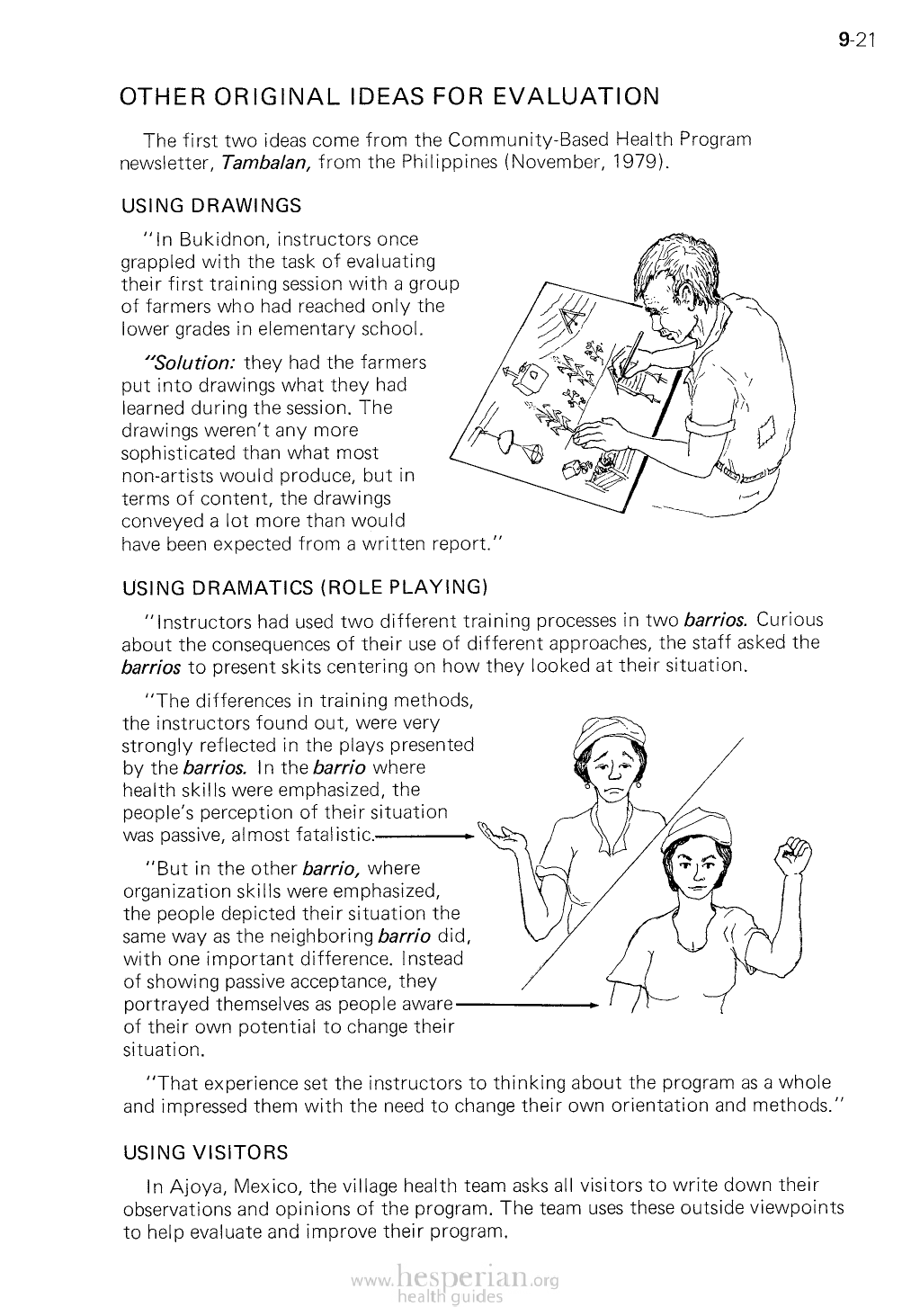
9-21
OTHER ORIGINAL IDEAS FOR EVALUATION
The first two ideas come from the Community-Based Health Program newsletter,
Tambalan, from the Philippines (November, 1979).
USING DRAWINGS
“In Bukidnon, instructors once
grappled with the task of evaluating their
first training session with a group of
farmers who had reached only the lower
grades in elementary school.
“Solution: they had the farmers
put into drawings what they
had learned during the session.
The drawings weren’t any more
sophisticated than what most
non-artists would produce, but in
terms of content, the drawings
conveyed a lot more than would
have been expected from a written report.”
USING DRAMATICS (ROLE PLAYING)
“Instructors had used two different training processes in two barrios. Curious
about the consequences of their use of different approaches, the staff asked the
barrios to present skits centering on how they looked at their situation.
“The differences in training
methods, the instructors found out,
were very strongly reflected in the plays
presented by the barrios. In the barrio
where health skills were emphasized, the
people’s perception of their situation was
passive, almost fatalistic.
“But in the other barrio, where
organization skills were emphasized,
the people depicted their situation the
same way as the neighboring barrio did,
with one important difference. Instead
of showing passive acceptance, they
portrayed themselves as people aware
of their own potential to change their
situation.
“That experience set the instructors to thinking about the program as a whole and
impressed them with the need to change their own orientation and methods.”
USING VISITORS
In Ajoya, Mexico, the village health team asks all visitors to write down their
observations and opinions of the program. The team uses these outside viewpoints
to help evaluate and improve their program.